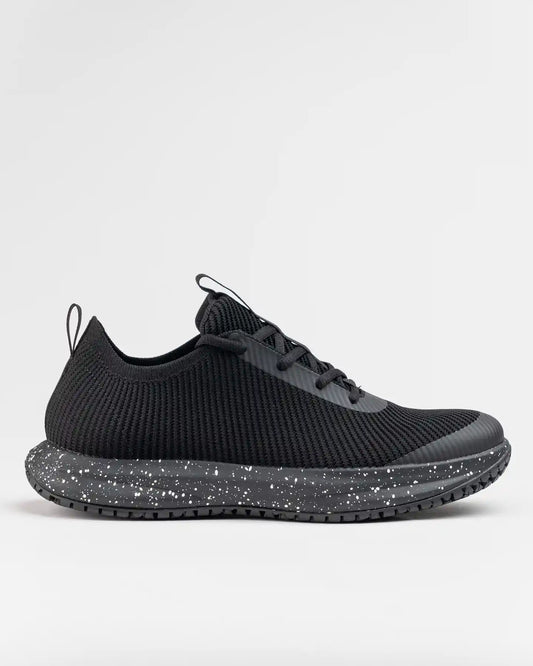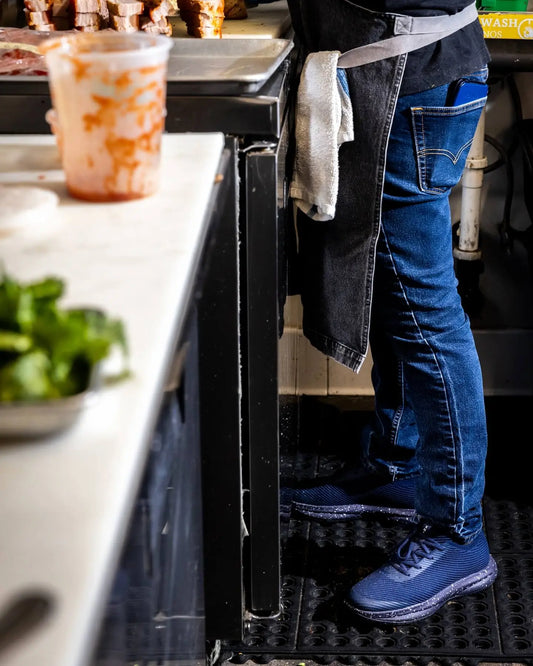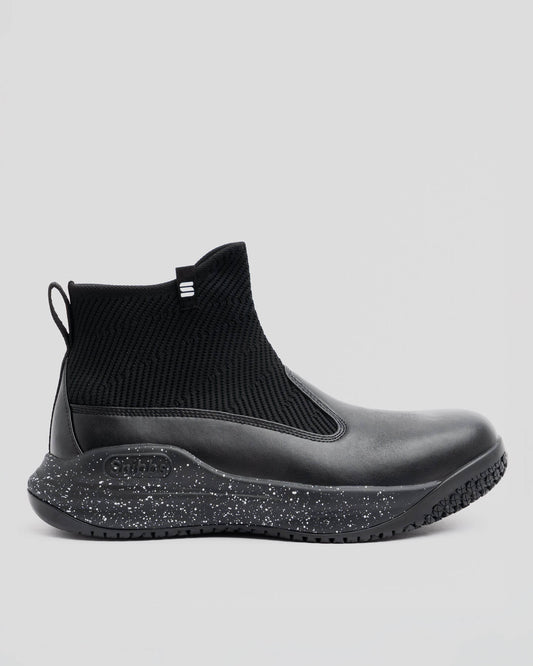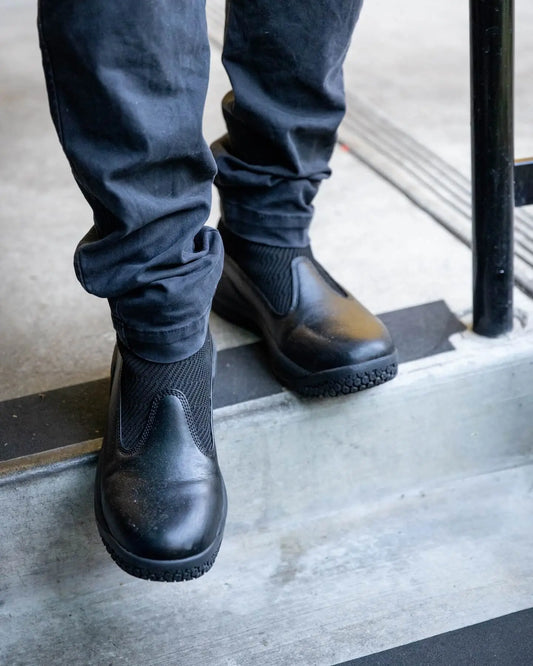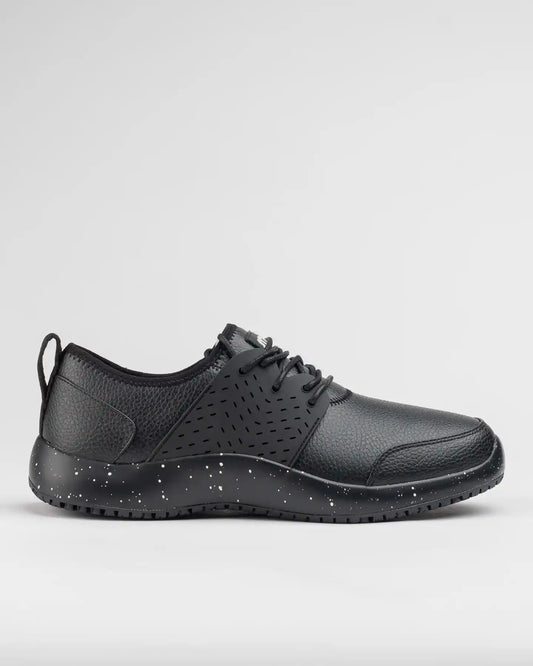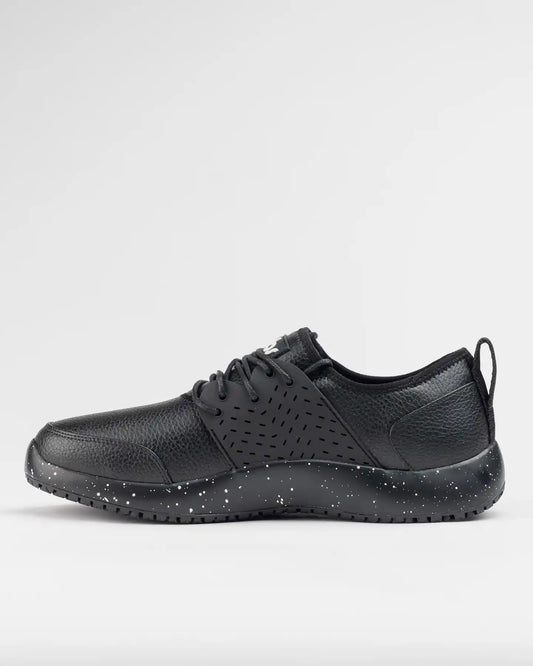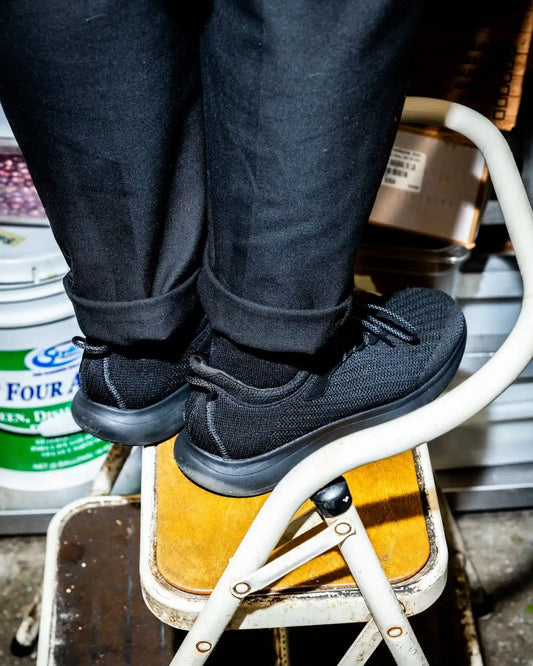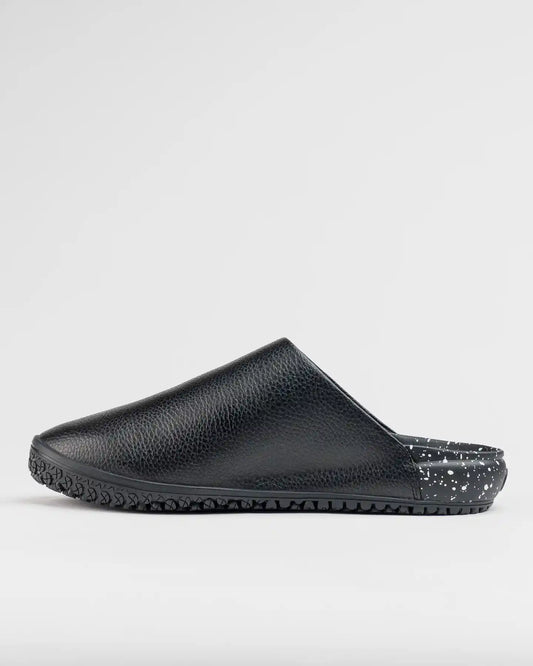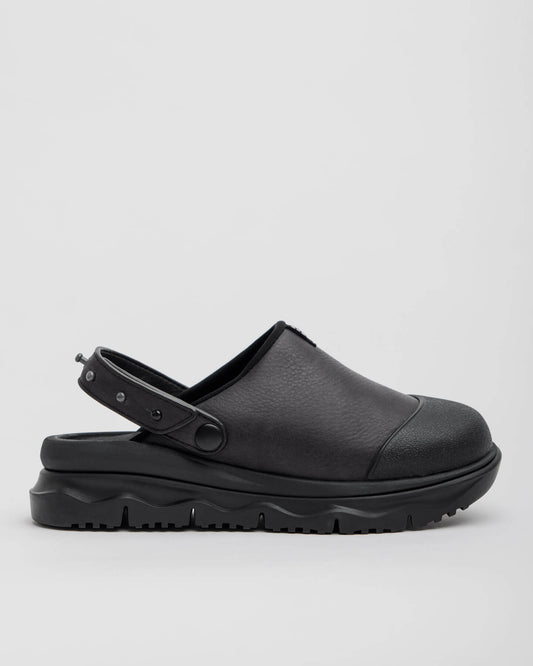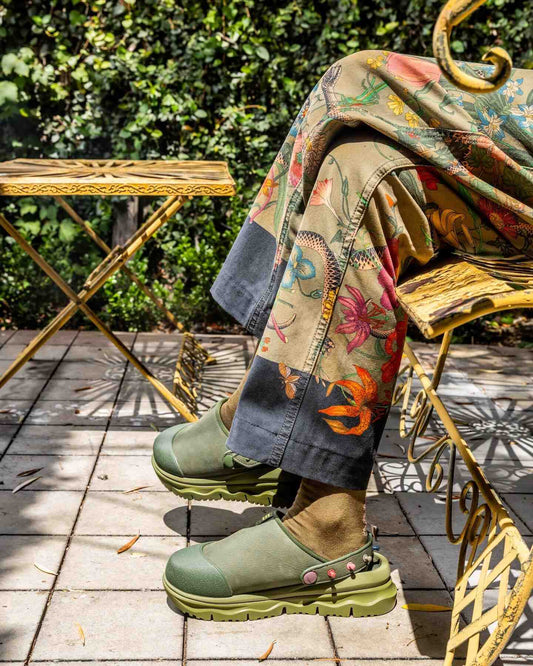8 Tips for Server Feet Problems
Alex Kinejara
Although Chef might think that the most important limbs you have to offer are your hands, as a server or bartender, you know that it’s your feet that really get the job done.
But you also know the soreness, fatigue, and discomfort that can put your feet out of commission after a few shifts spent standing behind the bar, running food, or sprinting from table to table.
Wondering what you can do to ease your sore feet, quiet your barking dogs, and make sure you have all your covers covered? Keep reading for eight tips to help prevent common server feet problems, from everyday aches and pains to calluses, corns, and infections. Here’s what every server should know.
#1 Find the Right Shoes
Avoiding foot pain starts with footwear. Perhaps the single best thing you can do to curb server feet problems is to find the right restaurant shoes for the job. You wouldn’t go hiking in a pair of flip-flops, so why would you show up for work in shoes that aren’t suited to the environment?
When it comes to shoes for servers, the right shoes will:
Finding the right shoes can also be the answer to avoiding some of the most common restaurant injuries.
#2 Never Underestimate the Power of Insoles
Another part to consider when tackling foot pain is the powerful insole. You can improve the support and comfort of your work shoes by slipping in a quality set of orthotic insoles. Insoles are designed to cradle your foot and make up for support that most shoes lack. They can help combat server feet problems during your shift by:3
- Supporting your arches
- Cushioning your heels
- Fighting muscle fatigue
Insoles come in three different thicknesses, known as “volumes,” depending on how much lift they give to your arch.4 If you go the insert route, you’ll need to decide if you want high, medium, or low-volume inserts based on the desired amount of lift.
#3 Hygiene is Key
One way to avoid common server feet problems, from athlete’s foot and fungal infections to blisters, bunions, and ingrown toenails, is to prioritize your foot hygiene. But even if you’re scrubbing them down each time you shower, you might not be doing enough to keep your feet as clean as they should be.
At the end of the day, proper foot care and hygiene is a three-pronged effort. It includes being diligent about:
#4 Be a Sock Star
And speaking of socks...If you’re experiencing server feet problems, your socks could be to blame. There are many ways your sock game could be interfering with your foot health, from retaining moisture that facilitates bacterial and fungal growth to bulky fabrics that crowd your toes.
The solution? Start by choosing socks with the appropriate thickness. If they’re too thick, you can expect discomfort and extra sweating. On the other hand, blisters and sores from friction can occur if your socks aren’t thick enough.
Other sock-related waitress tips for sore feet include:
#5 Treat Your Feet
You already know that every long period of standing or walking can increase the chances of sore muscles and foot pain. While the right shoes and socks can help take care of your feet during your shift, you may need more. Showing them a little extra TLC between shifts can help relax and rejuvenate your feet.
You can create a foot care routine or pamper your feet by treating them to:
#6 Stretch It Out
It’s no secret that doing regular stretching helps keep your body limber, improves circulation, and facilitates muscle performance, among many other benefits.11 What’s less well-known is that the same is true when it comes to stretching your feet.
Performing foot stretching exercises is an excellent way to boost your overall foot health.12 Just like in the rest of your body, stretching your feet helps:
- Promote flexibility, mobility, and strength
- Ease muscle soreness
- Reduce foot and ankle pain
Some exercises are as simple as toe splays, extensions, and curls, while others use props like tennis balls, marbles, and sand. Experiment with different exercises until you settle on the plan that’s best for your feet. A foot problem you have may also be leading to sore muscles in your legs or even back pain. So stretching can have overall benefits for your body.
#7 Care For Your Kicks
Just as important as caring for your feet is caring for your shoes. After all, your shoes are the barrier between your feet and the hard, unyielding surfaces they come into contact with all day. In other words, they need to be up to the challenge.
The first step is opting for quality. When you start with a well-made pair of shoes, keeping them in good condition is so much easier. Aside from regular cleaning, you should also:
Although shoes that have worn to the shape of your feet might seem to be more comfortable, they can actually be quite dangerous. Be ready to let go of your shoes when they’ve reached the end of their lives.
#8 Use Mats At Work
While there are many workplace and restaurant safety tips for employees to follow, there are safety procedures for workplaces to follow as well. The human foot was designed to walk on soft, forgiving surfaces like dirt, sand, and grass. Unfortunately, you probably spend most of your time standing on and walking across hard surfaces—especially at work. Well-designed shoes and orthotic insoles can make up for some of it, but anti-fatigue floor mats are an essential second guard between your feet and the floor.
If your place of employment isn’t already using floor mats, speak with your manager about making a change. They’ll likely come on board once you tell them how anti-floor mats can increase your productivity by:15
- Reducing tiredness
- Reducing risk of injury
- Alleviating pain
Treat Your Feet to a Pair of Snibbs
The shoes might not make the man, but they can make all the difference to your foot health. If you’re on your feet all day, you need a pair of server shoes that are prepared to stand with you.
That’s where Snibbs comes in. We’re bridging the gap between fashion and function when it comes to shoes for people who spend a lot of time on their feet. Our stylish, work-safe shoes combine the highest-quality materials with lab-tested orthopedic features for shoes that perform shift after shift.
Designed by industry veterans, our shoes offer everything you need to stay on your feet, like water and slip-resistance, ultra-supportive, dual-density insoles, and ergonomically-designed midsoles for all-day comfort.
Step into the future of shoes for the workplace in a pair of Snibbs. Shop non-slip shoes today.
Sources:
- VeryWellHealth. How to Find Shoes That Fit Your Toes. https://www.verywellhealth.com/how-to-find-shoes-that-fit-1337774
- Foot Care MD. 10 Points of Proper Shoe Fit. https://www.footcaremd.org/resources/how-to-help/10-points-of-proper-shoe-fit#
- Banner Health. Are Over-the-Counter Insoles a Waste or Worth It?. https://www.bannerhealth.com/healthcareblog/better-me/are-over-the-counter-insoles-a-waste-or-worth-it
- Cary Orthopaedics. The Importance of Taking Care of Your Feet. https://www.caryortho.com/the-importance-of-taking-care-of-your-feet/
- REI. How to Choose Insoles for Shoe Inserts. https://www.rei.com/learn/expert-advice/insoles.html
- Bustle. The 6 Best Shoe Deodorizer Sprays. https://www.bustle.com/life/best-shoe-deodorizer-sprays
- Cleveland Clinic. What You Should Know About Compression Socks. https://health.clevelandclinic.org/what-you-should-know-about-compression-socks/
- Harvard Health Publishing. Foot massage: The pause that refreshes and is good for you! https://www.health.harvard.edu/mind-and-mood/foot-massage-the-pause-that-refreshes-and-it-good-for-you#
- Very Well Fit. How to Pamper Your Feet Post-Workout. https://www.verywellfit.com/best-ways-to-pamper-your-feet-3435790
- Healthline. Epsom Salt Foot Soak. https://www.healthline.com/health/epsom-salt-foot-soak
- Mayo Clinic. Stretching: focus on flexibility. https://www.mayoclinic.org/healthy-lifestyle/fitness/in-depth/stretching/art-20047931
- Healthline. Foot Exercises: Strengthening, Flexibility, and More. https://www.healthline.com/health/fitness-exercise/foot-exercises
- Today. Why you shouldn’t wear the same pair of shoes everyday. https://www.today.com/style/why-you-shouldn-t-wear-same-pair-shoes-every-day-t115144
- Martha Stewart. How to Take Care of Your Shoes and Keep Them Looking Like New. https://www.marthastewart.com/1136215/how-take-care-your-shoes-keep-looking-new#
- EHS Today. New Study Confirms Benefits of Anti-Fatigue Mats. https://www.ehstoday.com/health/article/21915379/new-study-confirms-benefits-of-antifatigue-mats

